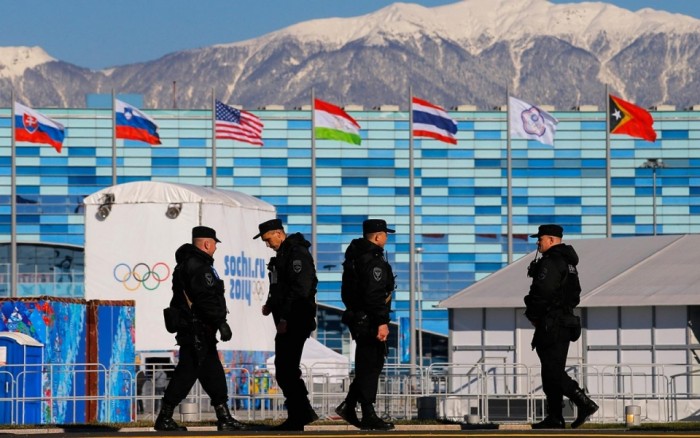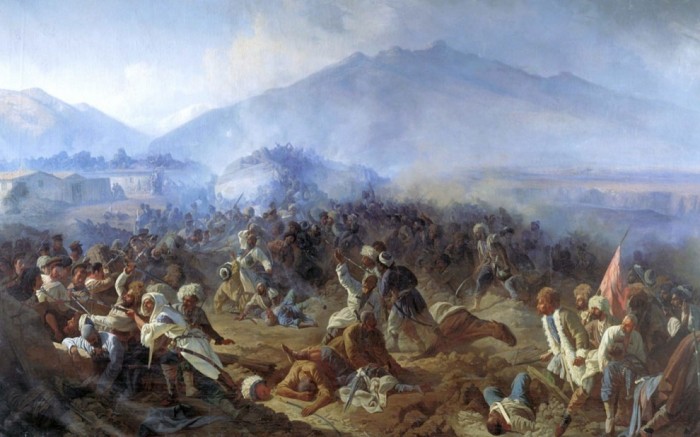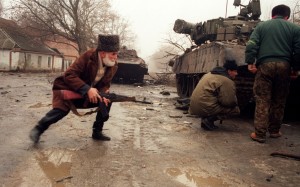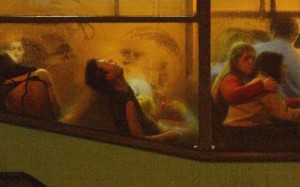The Caucasus: A historical challenge for Russia
As the Sochi Olympics kick off, Russia’s unresolved conflicts resurface
- Topics: Russia / Sochi 2014 / International

More than 30 people were killed in bombings targeting a bus and a railway station in the southern Russian city of Volgograd in late December, ahead of the Winter Olympics held in Sochi. The two suspected suicide bombers have been identified by the country’s counterterrorism agency as being from Dagestan, a semi-autonomous region in the Caucasus.
The site of the Winter Olympics is also located in the Caucasus, a region ravaged by decades of war as the populations continue their struggle for independence.
Here’s a look back at the Caucasian fight for freedom from Russia:
Caucasian War

In 1817, Russian forces invaded the Persian-controlled Caucasus, sparking decades of fierce battles with local tribes in regions including Chechnya, Dagestan and Circassian areas. The bloody war finally ended in 1864 — after resistance leader Imam Shamil was captured — with Russia annexing the Caucasus. More than 290,000 people died in the war.
Immediately afterward, hundreds of thousands of Circassians were expelled from the Caucasus by Russia to the Ottoman Empire. Thousands of Circassians are believed to have been killed en masse as well. Circassian activists say Sochi, the Black Sea coast city where the games will take place, is the site of the final expulsion of the Circassians from the Caucasus.
Other regions, including Ingushetia, Chechnya and Dagestan, continue an uneasy relationship with Russia, which leads to present-day instability in the Caucasus.
Expulsion from Caucasus

Despite the establishment of the Chechen-Ingush Autonomous Soviet Socialist Republic (Chechen-Ingush ASSR) 10 years earlier, the entire Chechen population, accused of collaboration with Nazi Germany, was deported to Siberia and Central Asia by Soviet leader Joseph Stalin in the early 1940s. The Ingush were also deported to Central Asia. Dagestan’s population escaped the mass deportation.
Operation Lentil, as it was named, was classified as genocide by the European Parliment in 2004.
In 1957, during the de-Stalinization period, Soviet leader Nikita Khrushchev allowed Chechens and Ingushetians back to the Caucasus, restoring the Chechen-Ingush ASSR. However, after returning, Chechen and Ingush populations found their abandoned homes occupied by migrants from other regions of the Soviet Union.
First Chechen War

With the rapid fall of the Soviet Union in 1991, the thought of an independent state gained ground in Chechnya. The Chechen-Ingush ASSR was dissolved on Sept. 6, 1991, and Dzhokhar Dudayev was elected president of the Chechen Republic one month later. Dudayev unilaterally declared the Chechen Republic’s sovereignty and its independence from the Soviet Union.
In December 1994, Russian troops entered Chechnya in an attempt to quash the independence movement, sparking the First Chechen War. An estimate of more than 100,000 people — many of them civilians — were killed in the 20-month war, and hundreds of thousands were displaced.
On April 21, 1996, Dudayev was killed in a Russian missile attack, and his vice president, Zemlikhan Yandarbiyev, succeeded him. The next month, Yandarbiyev signed a peace agreement with Russian President Boris Yeltsin, though the treaty did not address Chechnya’s aspiration for independence or end the violence.
Years of bombardment led to ongoing instability and economic collapse in Chechnya. Hundreds of kidnappings — including that of Russia’s representative to Chechnya, Valentin Vlasov, who was later released, and four engineers from Britain and New Zealand, who were found dead — plagued Russia. Chechen rebels were also often kidnapped.
Sporadic clashes between Caucasian separatist groups and Russian forces continued throughout the 1990s as foreign Muslim fighters joined Chechen fighters.
Second Chechen War

The Chechen conflict with Russian forces spilled into neighboring Dagestan in July 1999, when Chechen fighters joined Dagestani separatist groups in an attempt to create an Islamic state. On Aug. 4, 1999, Russian Ministry of Internal Affairs (MVD) servicemen were killed in border clashes, provoking a Russian invasion into Dagestan the next day.
Despite Russia’s military superiority, separatist groups continued their clandestine attacks. In September 1999, a series of attacks on a mall and apartment buildings — including one housing families of Russian soldiers — led to hundreds of deaths.
Russian forces eventually used aerial attacks on population centers to quash the rebel fighters. More than 3,000 people were killed in the short Dagestan War, which ended on Sept. 28, 1999.
The Caucasus conflicts remained unresolved, however, and Russian forces redeployed from Dagestan to Chechnya. Newly appointed Prime Minister Vladimir Putin said the campaign was needed to suppress terrorism.
The Russian invasion of Chechnya led to hundreds of thousands of locals fleeing to neighboring Caucasus regions. Russian forces quickly took control of Chechnya’s capital, Grozny, and other cities in the months following the incursion.
Putin, who became acting president when Yeltsin unexpectedly resigned on Dec. 31, 1999, gained popular support for his heavy-handed approach in the Caucasus amid growing separatist attacks within Russia.
Putin won the presidential election and was inaugurated on May 7, 2000, the same month he established direct rule over Chechnya.
Despite the military occupation of Chechnya, the war had never ended as the call for independent states in the Caucasus continued.
Chechen fighters kept up attacks on Russia, including new fronts on civilian centers.
On Oct. 23, 2002, dozens of armed Chechen fighters took their fight all the way north to Moscow, the heart of Russian society. The fighters besieged the Dubrovka Theater, holding more than 850 people hostage, demanding that Russian troops withdraw from Chechnya.
The siege, which lasted two and a half days, ended with Russian forces controversially pumping a chemical gas into the ventilation system, then raiding the building. Effects from the gas killed 130 hostages. Forty rebel fighters were also killed by Russian forces.
On Sept. 1, 2004, rebel fighters from Chechnya and Ingushetia converged on the North Ossetia town of Beslan and besieged a school, holding more than 1,000 people hostage. The fighters, who were sent by Islamist separatist leader Shamil Basayev, demanded recognition for Chechen independence from Russia and the international community. The three-day standoff came to an end when Russian forces stormed the building. More than 330 hostages were killed, including 186 children.
The attacks continue as the Caucasian struggle for independence remains unresolved.
http://america.aljazeera.com/multimedia/2014/2/sochi-olympics-russiascaucasuschallenge.html
